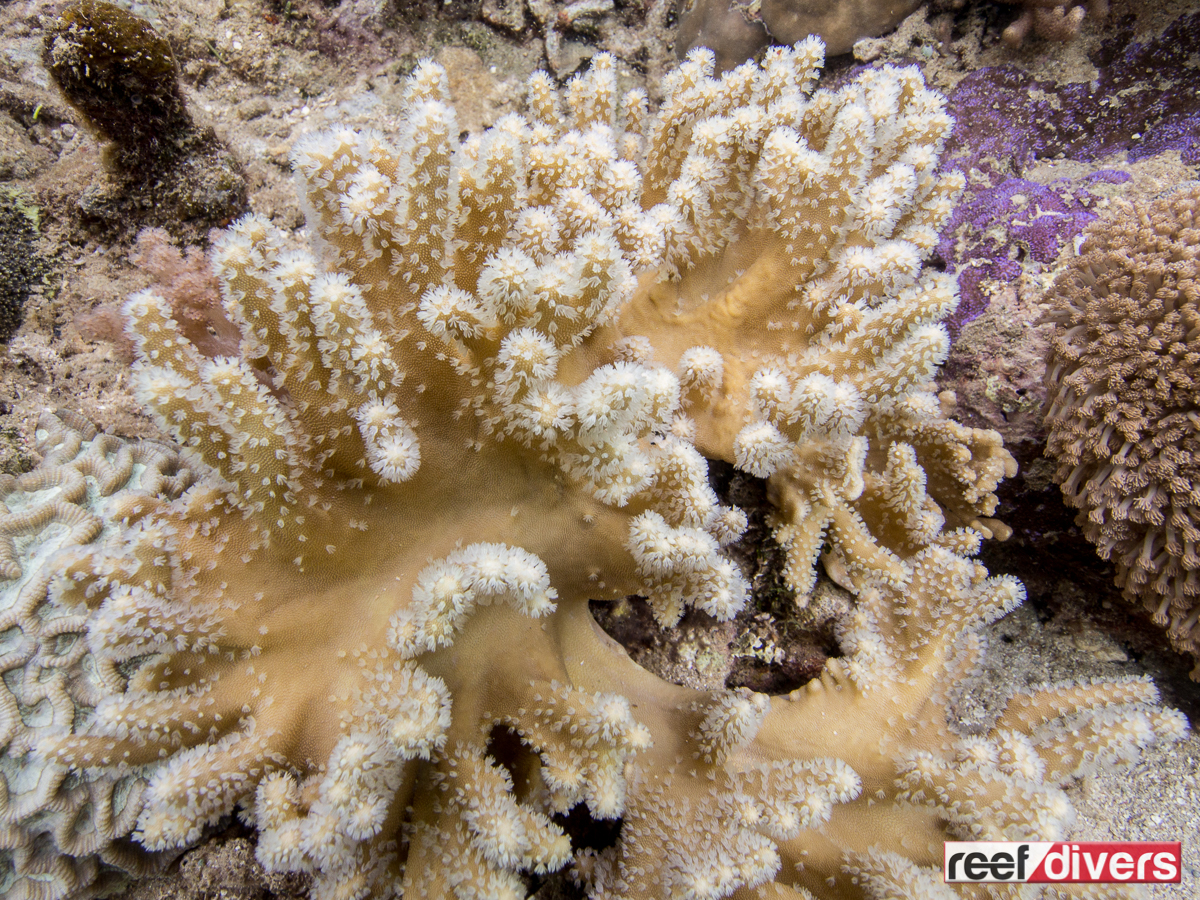Tanjung Merah
Earlier this month we had the chance to dive around Bangka Island with Sulawesi dive guru Danny Charlton, and he made sure to pick out the cream of the crop for our exploration dives. What really keeps me excited as a diver, is the thrill of discovering uncharted dive sites.
My favorite spots are shallow sunlit coral reefs, but often these peaceful habitats get overlooked for more action-packed drift dives and walls. Unless you know what to look for it’s easy to mislabel a three-meter deep bathtub filled with coral as kinda boring, but train your eyes to spot the diversity of corals and you’ll never want to leave.
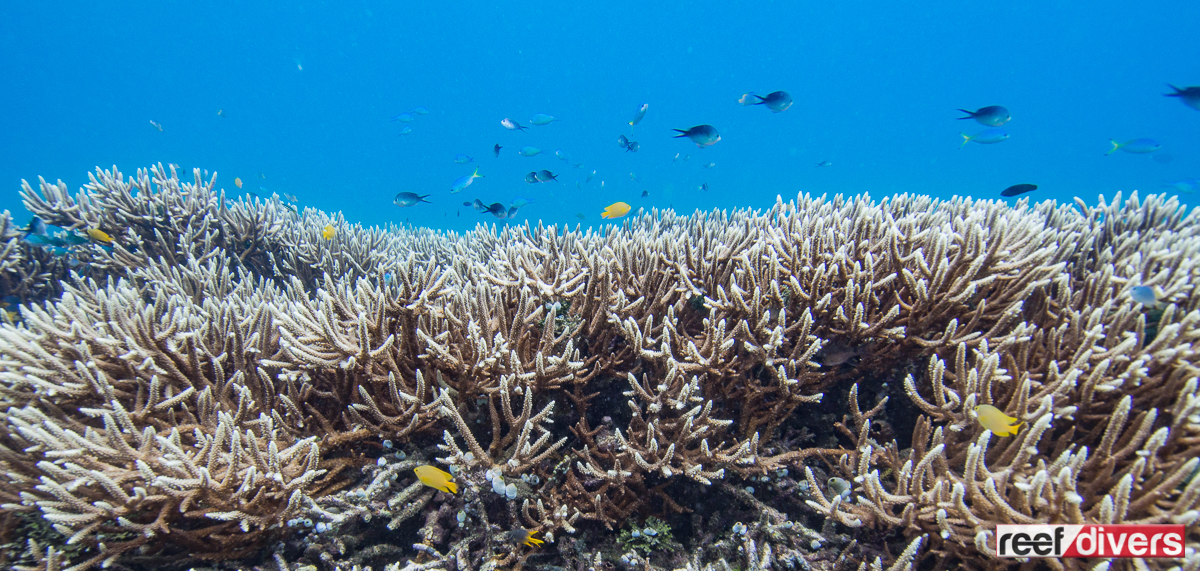
What’s Old Is New
Danny took us to a dive site named Tanjung Merah, which has only been visited a handful of times. It’s true this is not a brand spanking new dive site, you caught me! But this site is newly re-discovered by local guides, and hopefully, it will be added to the regular dive site rotation.
The dive site starts in a calm protected bay. Even before sticking my head in the water I knew this was going to be an exceptional dive. The second you roll back off the boat you’re met with a splash of pastel-colored leather corals and a variety of soft coral species swaying with the gentle ebb and flow.
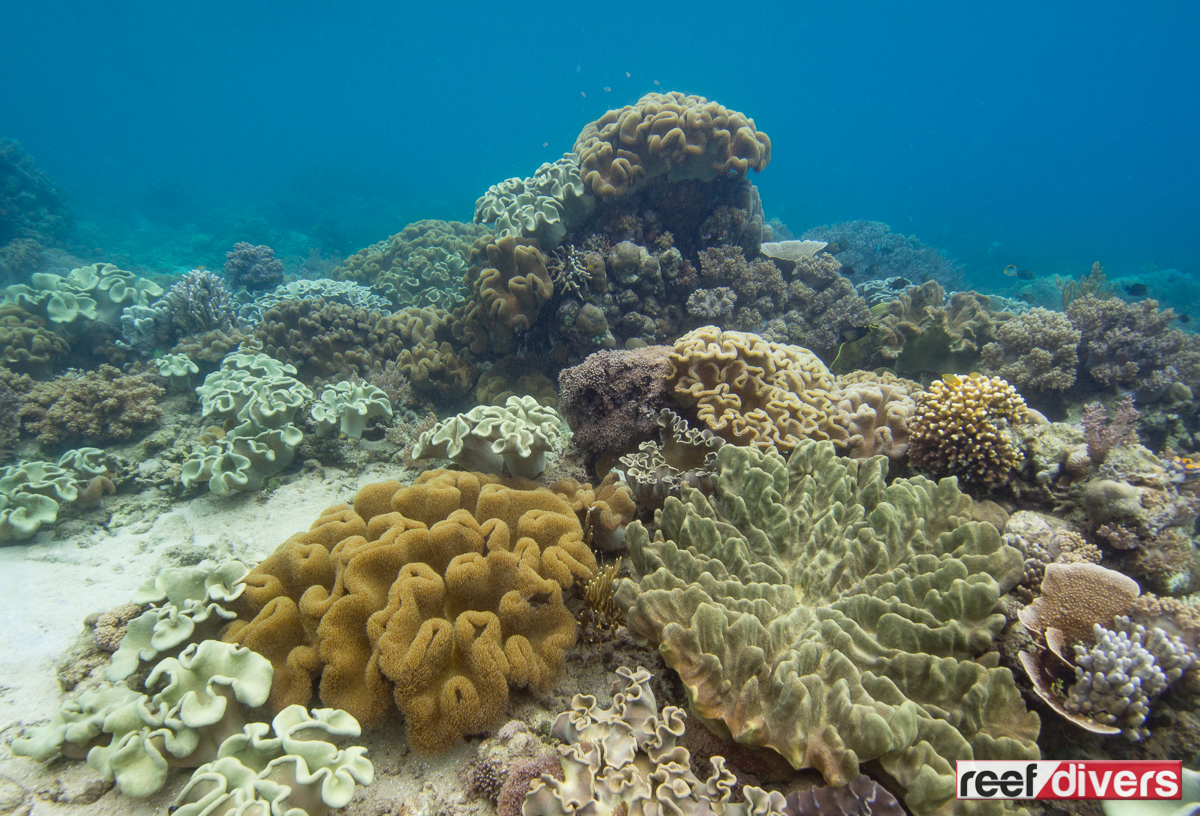
I found cuttlefish hiding amongst leathery stalks and damselfish, angelfish, and wrasse darting around the surface of the corals. Between the shallow reef, look for brightly colored clams wedged between the rocks and other perfectly camouflaged critters.
As the dive got deeper we found more branching stony corals Isopora, and Acropora. Also some impressive colonies of Porites that had to be five meters across. Near the end of our dive, the floor was carpeted in pulsing xenia, clove polyps, disk corals, and tiny yellow toadstools. This is one dive we never wanted to end.
I nicknamed this site Peaceful Leathers and through it perfectly reflected our stay at the Murex Hotel on Bangka Island. From my room, I could hear the waves rolling onto shore lulling me into a peaceful state of mind, and the island vibe with no power to your cabin during the day made me slow down, unplug, and relax.
If you’re planning a trip to Bangka we highly recommend visiting the Tanjung Merah dive site. Check out our latest vlog post from Bangka Island and video from the peaceful leather dive site.
Big thanks to Danny at the crew at Murex Bangka Island for the trip to Tanjung Merah!
Coral Identification Tip
Leather corals are a type of soft coral, and there are three main genera of leathers.
The coral on the left is a Sarcophyton and the coral on the right is a Lobophytum. You can tell them apart because the Lobophytum has fingers or lobes that grow out of the coral, while the surface of the Sarcophyton is smooth and has folded edges.
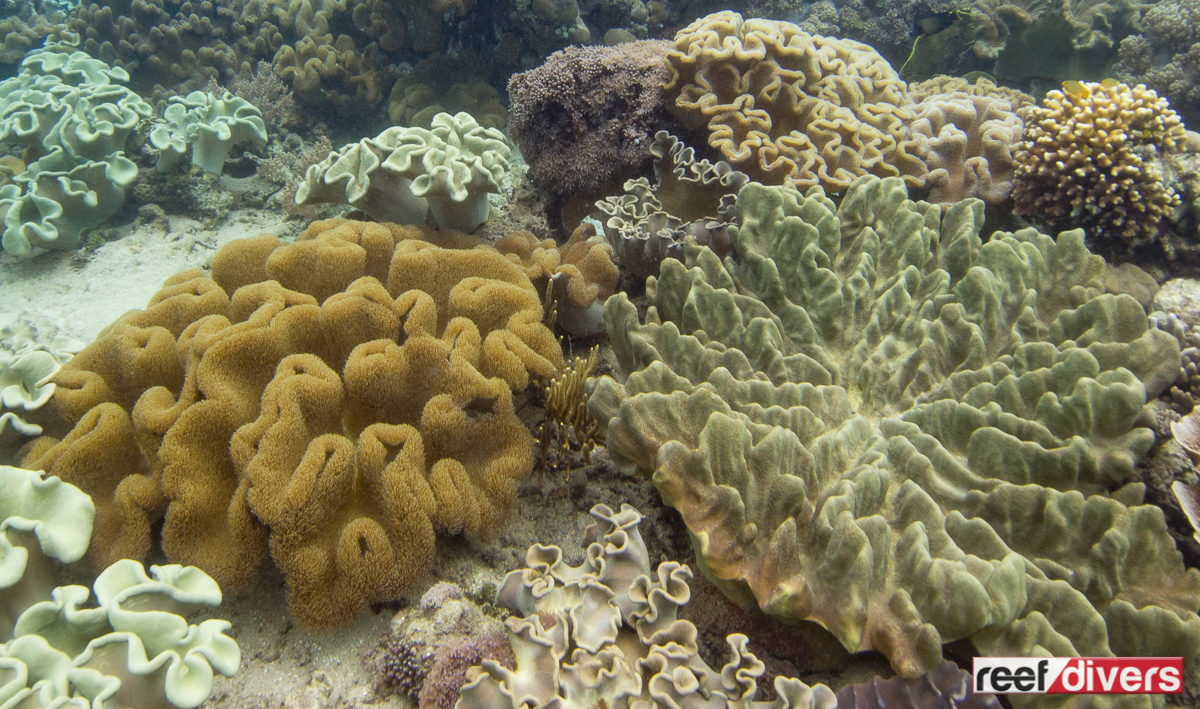
Another interesting fact about these two corals is that Lobophytum and Sacrophyton have two sets of polyps, this is called dimorphic polyps.
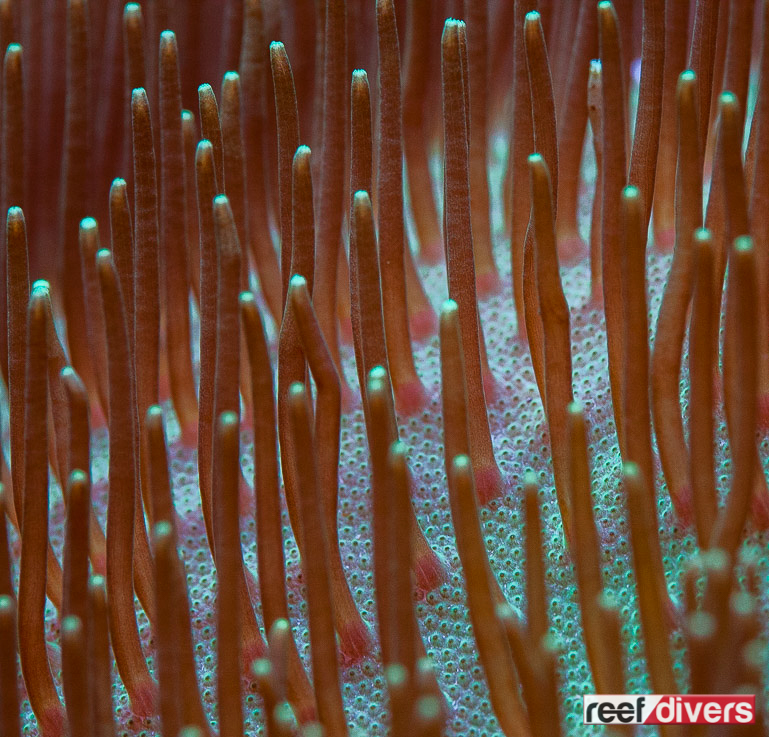 If you look closely at the photo to the left (click to enlarge) you can see two sets of polyps. One large dominant polyp which extends from the crown or capitulum of the coral and very small polyps that stay embedded in the crown of the coral. Sarcophyton has long flowing polyps while the polyps of Lobophtyum are smaller or may not be visible at all.
If you look closely at the photo to the left (click to enlarge) you can see two sets of polyps. One large dominant polyp which extends from the crown or capitulum of the coral and very small polyps that stay embedded in the crown of the coral. Sarcophyton has long flowing polyps while the polyps of Lobophtyum are smaller or may not be visible at all.
The third species of leather coral is Sinularia.
Sinularia is a very widespread genus of soft coral with over one hundred species. This coral is slightly different than our first two types of leather because it only has one set of polyps. These polyps are short and found on the fingery branches.
What’s really unique about Sinularia is it is the only reef building soft coral. Sinularia actually builds a hard skeleton at its base to stay firmly attached to the rocks.
Both images below show a Sinularia coral on the left and Sarcophyton on the right. Sinularis could be mistaken for Lobophytum because it has fingered lobes coming out of the coral but the giveaway is the secondary branches growing off the lobes. Lobotphytum which have smooth single branches or lobes.
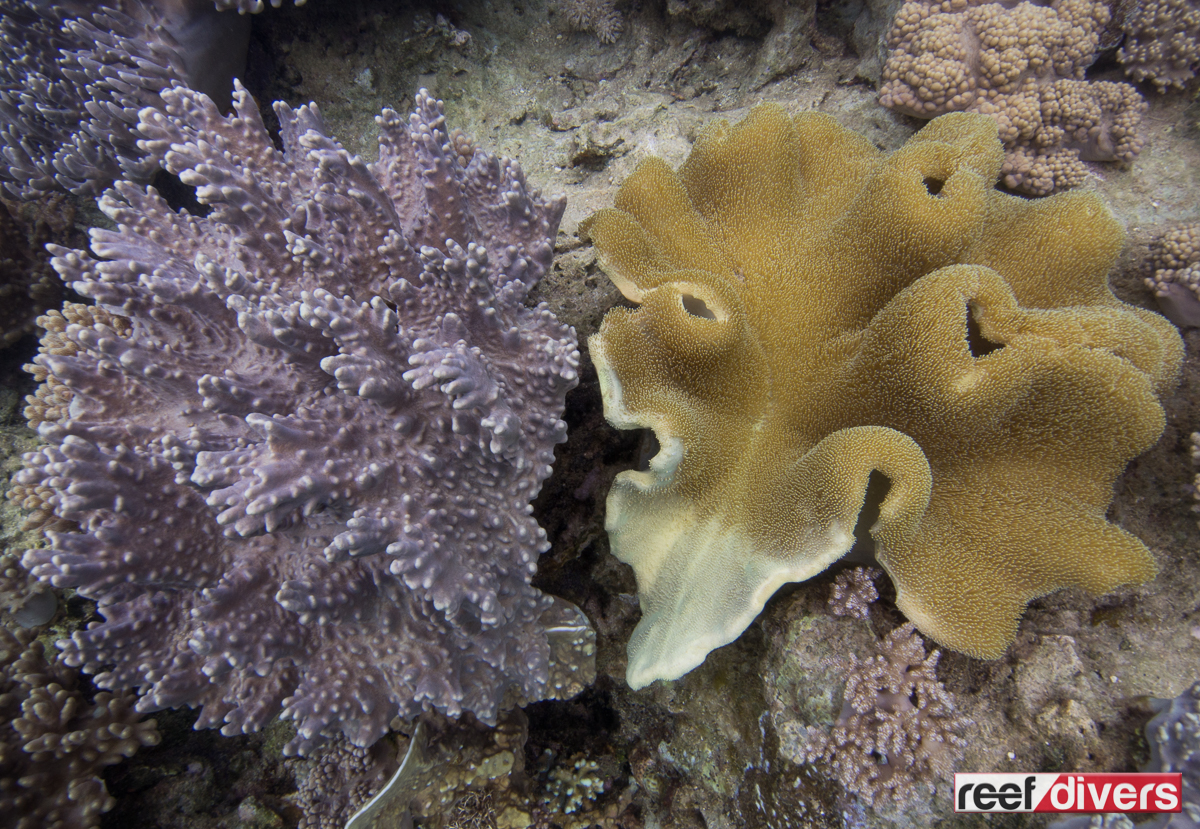

Just to make things a little more complicated! The photo above is a Sinularia, while the photo below is a Lobophytum.
The two species can be tricky to tell apart, but generally, Lobophytum will have smooth branches, where as for the coral above each branch has several branchlets sprouting on the coral, a giveaway to the genus Sinularia.